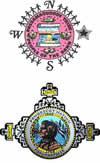Implementation Challenge – Penobscot Nation and Passamaquoddy Tribe at Sipayik

How do we ensure that our tribal community values are reflected in all aspects of our work?
The Wabanaki Consortium, made up of the Penobscot Nation and the Passamaquoddy Tribe in Sipayik, wanted to build on the strong child welfare principles and practices already in place (e.g., focus on prevention, philosophy of maintaining children in their home, and the use of kin) but also to examine those practices that needed to be designed or modified. Both agencies recognized that they had outdated child welfare policies and procedures that did not reflect current practice. Neither agency had an articulated practice model. Case management record keeping and programmatic data collection in both agencies was manual and prohibitively time-consuming.
The Approach
NCIC worked with the Wabanaki Consortium on the articulation of practice models in each tribal community, updating and aligning policies and tribal codes, and enhancing capacity for data collection through the modification and adoption of a case management database. Although not fully developed in the scope of this project, each community also recognized the need to align hiring practices, a quality case review tool, and supervisory practices with their Practice Model values.
NCIC’s Role
Facilitated diagnosis of technical and adaptive challenges in each agency resulting in a clearly defined scope of work.
Built capacity within the tribal agencies around the need for articulating and communicating their values with stakeholders, identifying priority indicators, and electronic data collection.
Broadened agency perspectives through regional peer-networking calls, a Tribal Gathering, an Implementation Round Table with other jurisdictions, and calls with tribes across the country experienced in similar initiatives.
Provided coaching to agency directors and front-line staff on stakeholder engagement, the setting of targeted outcomes, and succession planning.
Provided a Project Coordinator, local evaluators, a database developer, brought in a national expert to consult on managing by data. Purchased secure servers for storing child welfare data.
Results
Articulated Practice Models. While each tribal child welfare agency had been committed to ensuring their practice was reflective of their communities’ values, this was the first time they articulated those principles with input from tribal members and shared them with all stakeholders.
Revised Policies and Tribal Codes. Both communities had policies that were not only outdated but had been modeled after state policies. These reflected values of the dominant white culture rather than the tribe. Tribal policies, along with the corresponding Tribal Codes, were updated to reflect of current practice and to align with the practice model values.
Targeted Outcomes. Based on practice model values, each community developed measurable practice outcomes and corresponding strategies to assist in reaching those goals.
Case Management Database. Both communities moved from paper files to the modification and adoption of a case management database, designed to align with the practice model, capturing data needed to track consistency of day-to-day casework practice with the Tribal practice model.
Supports for improved caseworker visits. Focused on improving outcomes around visitation, one tribe developed Visitation Folders for staff to have with them at all times, so that even unexpected visits with parents and children would follow the protocol aligned with the community’s values.
Cultural Connection Tool. One tribe developed a tool in their language and English that captured a child’s familiarity with their culture and participation in events.